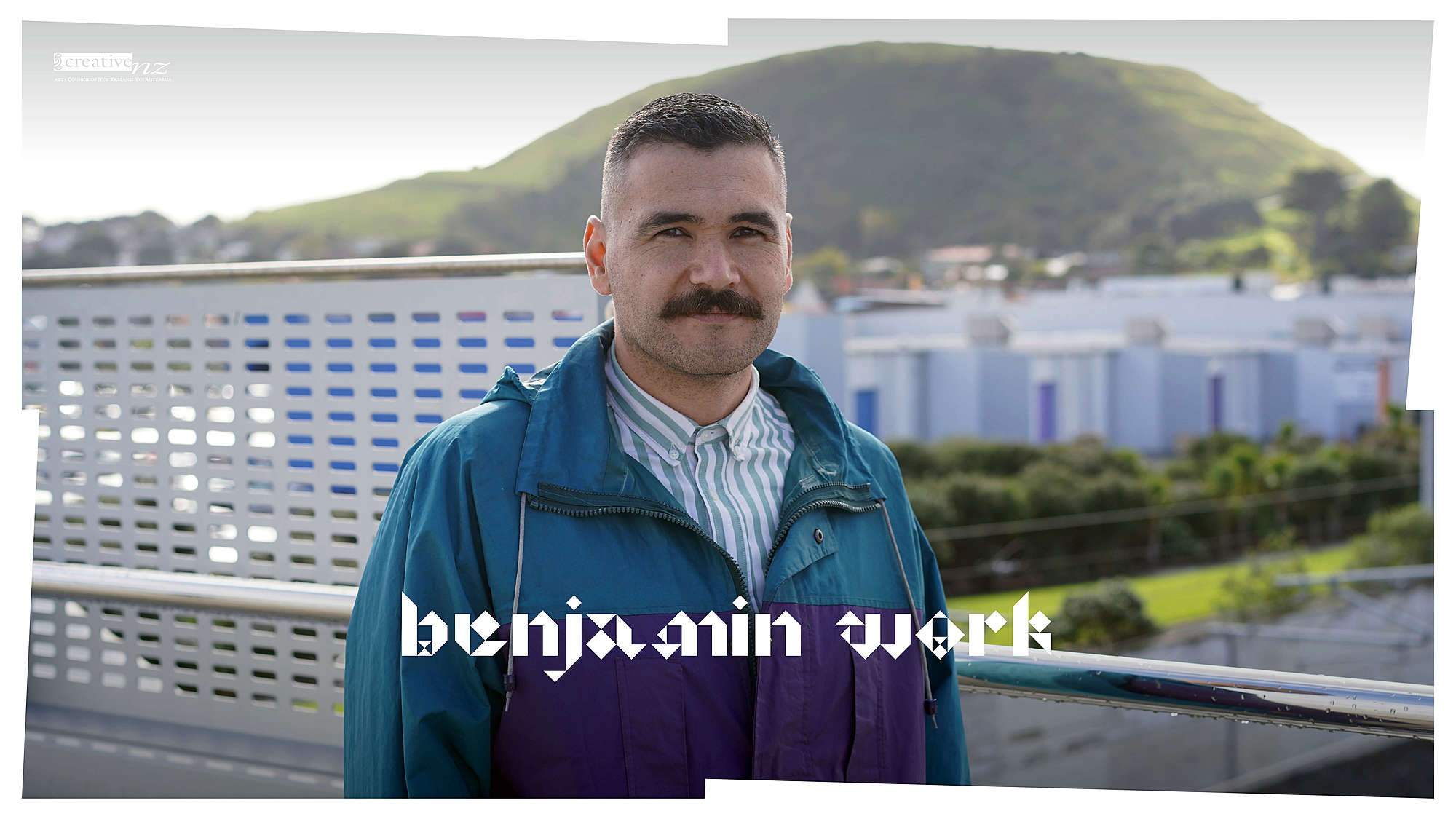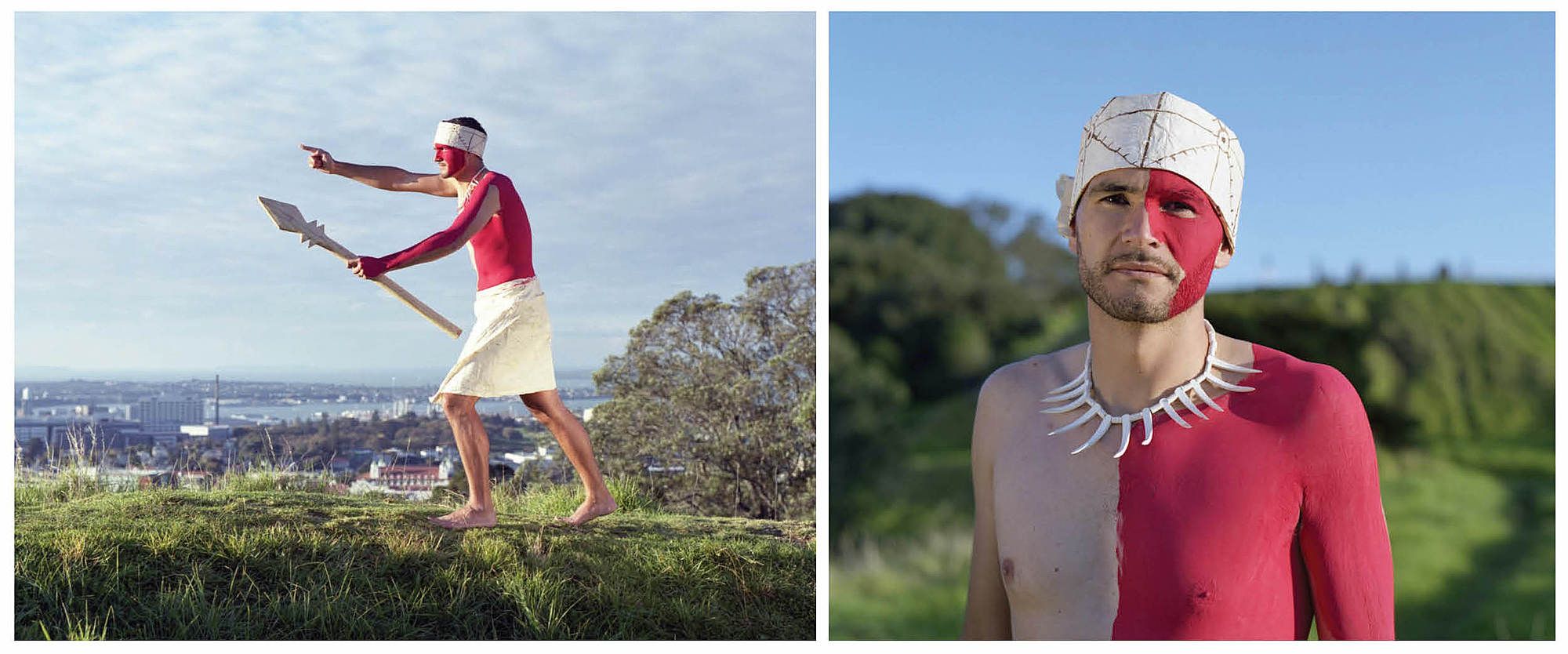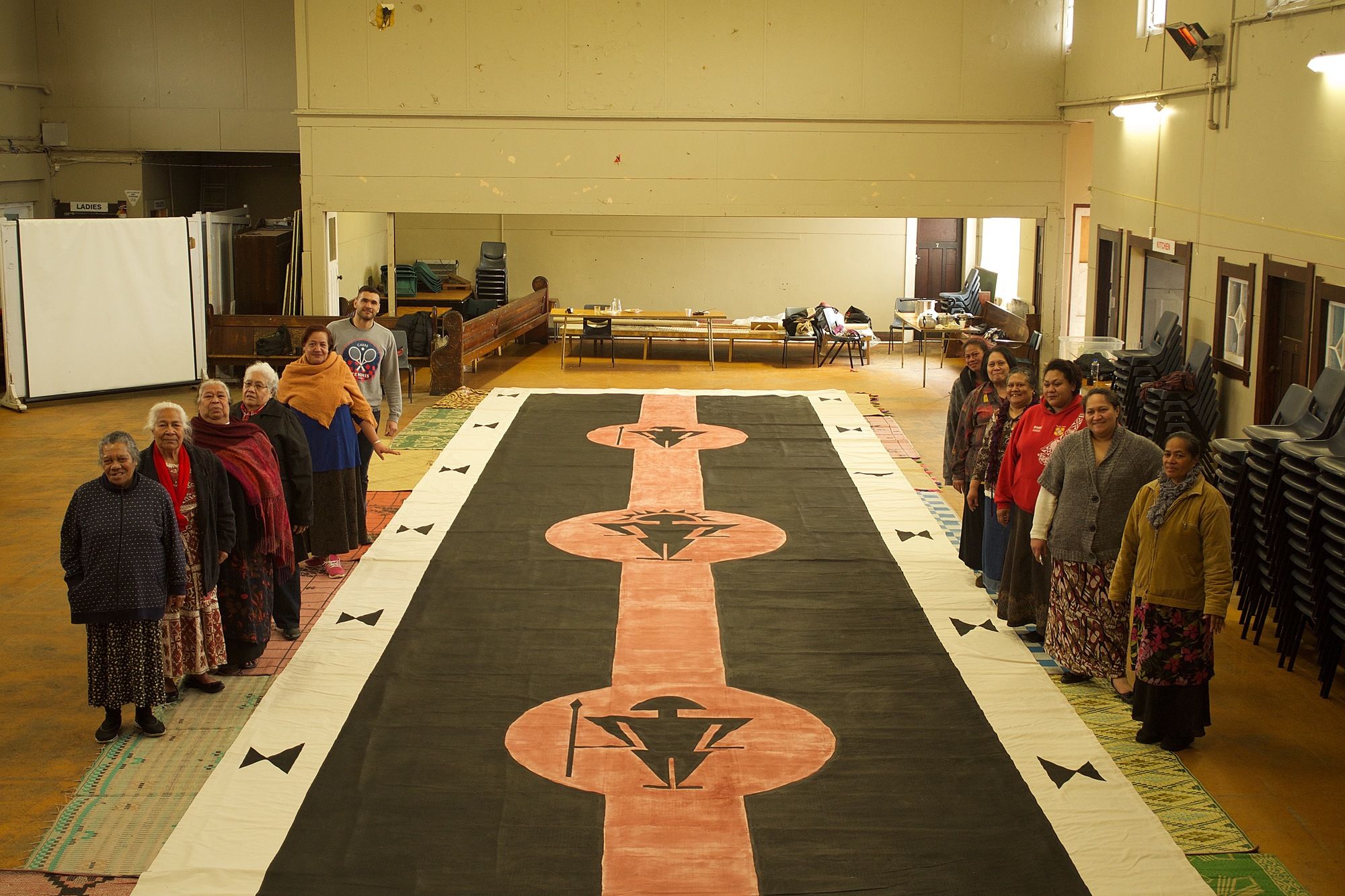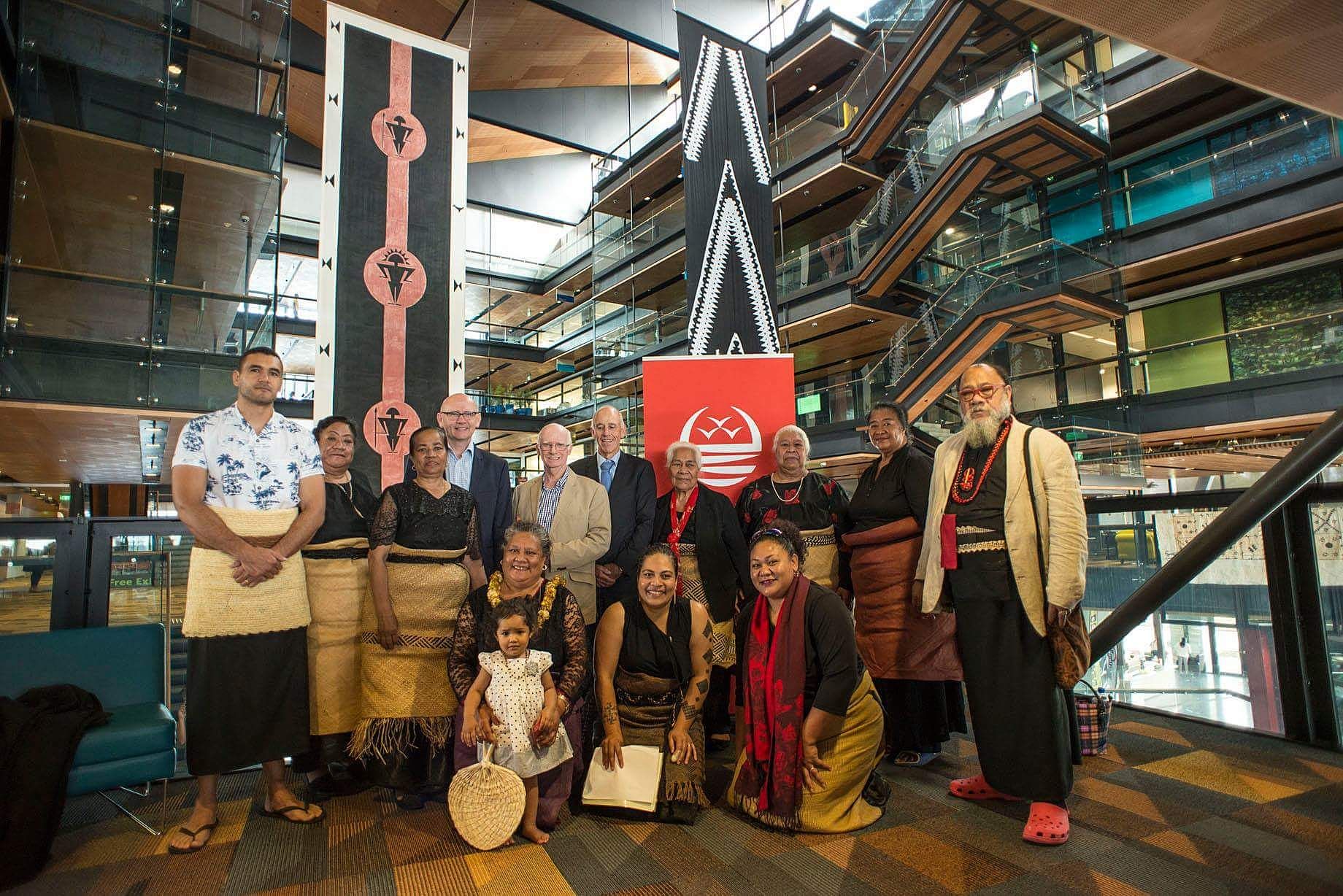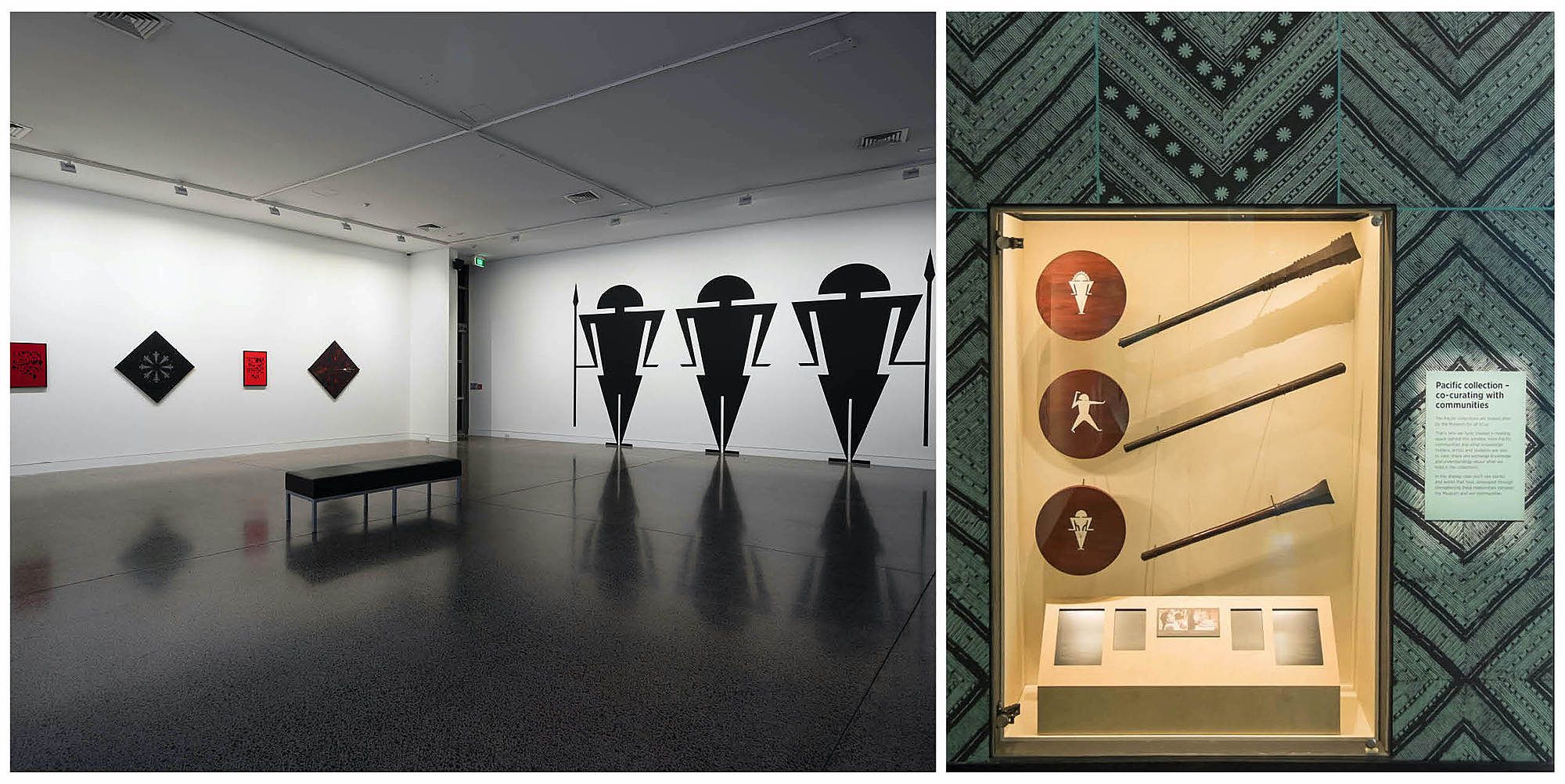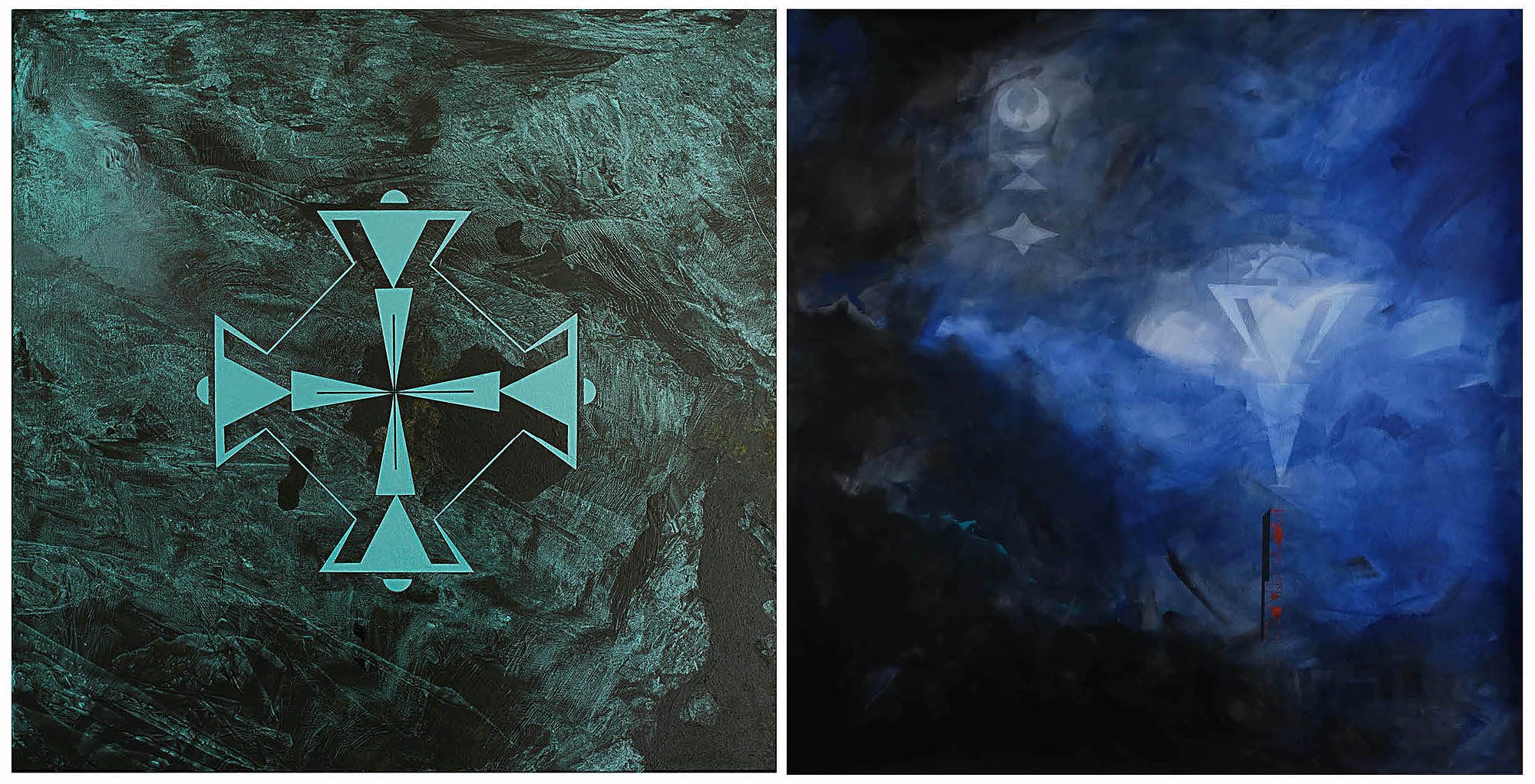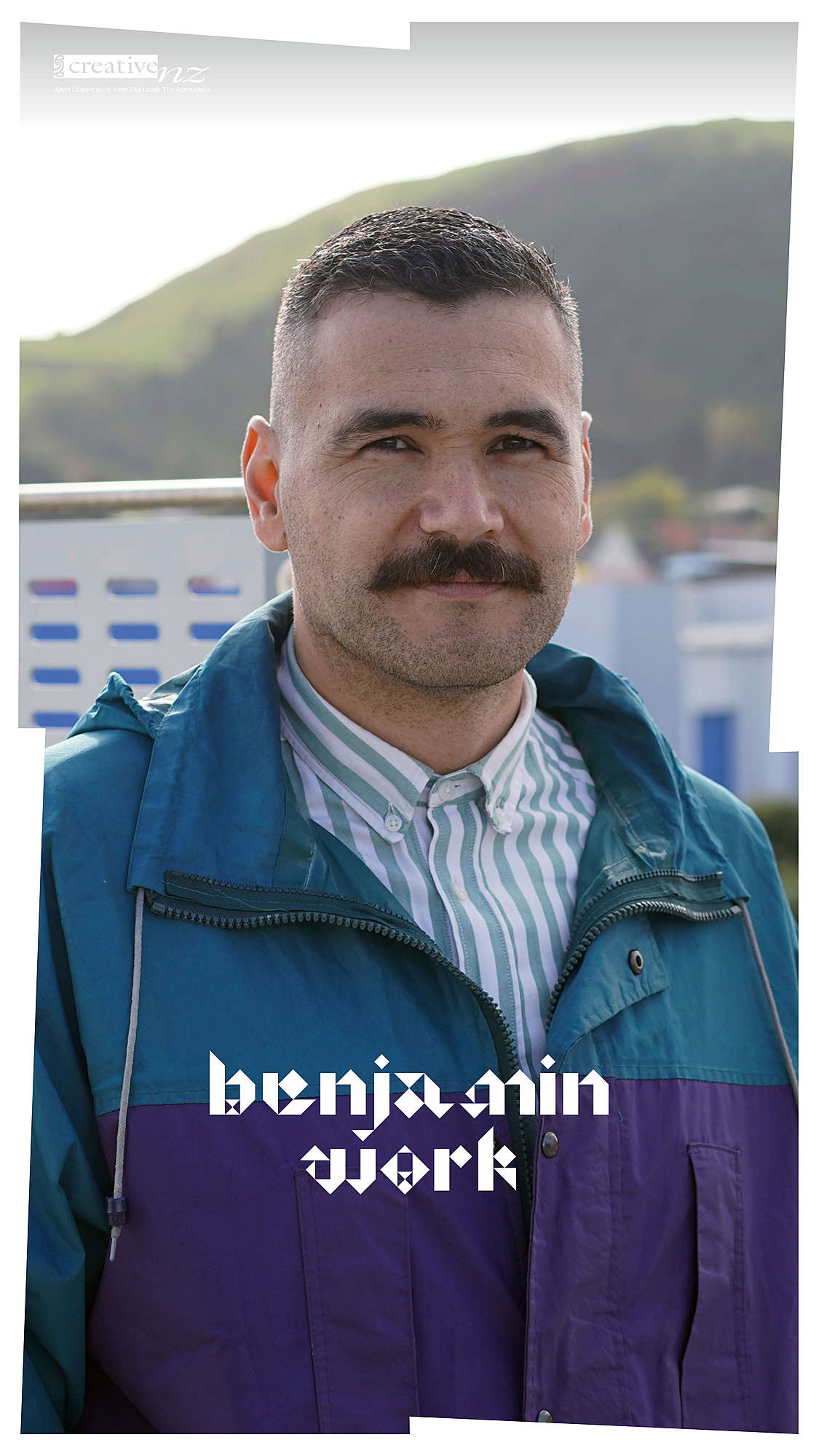From a Fonua Far, Far Away
Street Fighter II, ‘Chains’ by DLT featuring Che Fu and The Most Dedicated graffiti collective was the urban reality of artist Benjamin Work, who writes on the many journeys taken over his creative career.
We’re collaborating with Creative New Zealand to bring you the groundbreaking Pacific Arts Legacy Project. Curated by Lana Lopesi as project Editor-in-Chief, it’s a foundational history of Pacific arts in Aotearoa as told from the perspective of the artists who were there.
Welcome to the odyssey of Benjamin Work, the story of a boy’s life; born and raised on a whenua called Te Pakuranga Rāhihi in the great city of Tāmaki Makaurau. His ancestors, however, came from a fonua far, far away.
VOYAGE: A long journey involving travel by sea or through space.
I am the only son of my Scottish father, whose ancestors are from the Work and Burns clans of Shetland, Orkney and Ayr in Scotland. I’m not exactly sure what they knew about this beautiful land and the tangata whenua who live here, but they set sail across the seas, arriving at Nelson and Christchurch. My Tongan mother, who descends from the ancient clan Haʻa Lātūhifo, was born and raised in Vavaʻu by her father, Anitelu Toeʻapi Kulimoeʻanga, from Tuʻanekivale/Koloa, and her mother, Litea ‘Aloua ‘Atevalu, from Tongamamaʻo in Niua Foʻou.
My parents were pen pals, and after a few letters to each other my father flew to Tonga to meet his ‘friend’. They were married, and returned together to Aotearoa via a vakapuna that touched down in Māngere, where they would start a new life together.
WANDERING: Travelling aimlessly from place to place; itinerant.
These ancient bloodlines and memories are embedded in my DNA, giving strength to who I am; however, who I am was challenged just about every day as I entered into the schooling system. High school was structured in a way that was often irrelevant and unkind, especially towards the creative types. It was in the back of my exercise books that I found refuge, a place to escape through scribbles and drawings. I wandered outside of school, looking for inspiration, congregating at the local shops to play Street Fighter II, catching eels from the Pakuranga Creek, exploring in the long grass and imagining all the different places I could be transported to. Although the only travelling we did as a family was on the weekends, between my Pālangi grandparents on the North Shore and my extended Tongan kāinga throughout South Auckland. This was a snapshot of the cultural differences I had to navigate as an insecure teenager.
JOURNEY: An act of travelling from one place to another.
It was the city lights, and all that crept in the night, that had me captivated, and all it took was one ride on my urban vaka, Route 52. If the bus was my vaka then the dilapidated Britomart bus terminal was the matapā (gateway), a place that needed careful negotiation in the 90s. In 1993, at the Stages arcade, I was stepped out for the first time by some Sāmoan Bloods, and in 1994 in an abandoned building I experienced my first rave; quite an upgrade from garage parties in the suburbs. Not far up the road, in Vulcan Lane, in 1995, I bought my first pair of Dickies from Retro (later Loaded), a fashion store I would work for. It was 1996 and ‘Chains’ by DLT featuring Che Fu had just been released, Jim Bolger was Prime Minister and a new generation of Aotearoa painters congregated along the deteriorating Tāmaki Makaurau railway corridor, competing for the most visible locations to paint.
A new generation of Aotearoa painters congregated along the deteriorating Tāmaki Makaurau railway corridor, competing for the most visible locations to paint.
A new sense of intimacy had developed amongst the diaspora, not with flora and fauna but with a cityscape carved upon by transport networks weaving themselves around volcanoes and over bodies of water. It was along these same transport networks I met like-minded painters: Charles and Janine Williams, Elliot O’Donnell, Brendan Kitto and many more, who became friends and eventually whānau. Then in 1997, the international graffiti collective known as TMD (The Most Dedicated) was born.
Rather than submitting to the criteria of valuation upheld by the institutionalised art world, early graffiti painters developed an entirely new and separate art world based on their qualitative conception of style and particular aesthetic standards. These styles and standards were developed within the community for judging painters' content and technique, standards that were strongly upheld by TMD, taking us to great heights across the globe.
TREK: A long arduous journey, especially one made on foot.
Ever had a mountain-top experience?
In 2012 the third annual Pacific Arts Summit was held in South Auckland, and independent curator Ema Tavola extended an invitation for me to exhibit in a group exhibition, WWJD?
Leading up to the exhibition I had a mountain-top experience. There’s something about a challenging climb, finding your footing – and your breath, for that matter. Once you reach the top, above the noise, there’s clarity and insight. Coming off the mountain with a new sense of security and identity, I embarked on a new direction with my art practice and I attempted to capture the essence of this encounter with my work To‘a Motu.
To'a Motu I & II 2012
QUEST: A long or arduous search for something.
“It is the glory of God to conceal a matter, and it is the glory of kings and queens to search out a matter.” This proverb suggests knowledge isn’t hidden from us, rather for us; an invitation to seek out and pursue that which is unseen.
I felt the shift before I could articulate it, causing me to search for a new language, a language to communicate what I was seeing and feeling: I found this carved into Tongan weaponry. Bold, simple, masculine metaphors from our ancient martial weapons, which were closely associated with a warrior's accolades and sacred protocols. The iconography strategically placed across its surfaces was both metaphoric and abstract, and has intrigued me ever since.
After several years of trial and error, and processing many ideas with trusted friends and mentors like Andy Leleisiʻuao and Emily Karaka, I met independent curator, writer and arts advocate Kolokesa Uafā Māhina-Tuai. Māhina-Tuai proposed the idea of a special collaboration of older artists and collectives practising and innovating art forms from their homeland in Aotearoa, and younger Aotearoa-born artists, whose practices are informed by influences and media they’ve encountered living and growing up here. This collaborative project, with Tongan women's group Fauniteni ‘o e Vai Moʻui to make a ngatu tupenu embedded with the stories from our weaponry, was a dream come true for me.
Photographer: Brendan Kitto Ngatu Tupenu Tā'uli 2016
Photographer: Raymond Sagapolutele Ngatu Tupenu Tā'uli
TRAVELS: Going from one place to another, typically over a distance of some length.
In 2015, my wife and I joined Hūfanga-He-Ako-Moe-Lotu Professor ‘Ōkusitino Māhina, Kolokesa Uafā Māhina-Tuai, Kenneth Tuai, Meleseini Tuai and Akesiumeimoana Tuai on a research trip across Europe. We weaved our way through various museums that housed our Tongan treasures and gained access to some of the most valued Tongan koloa outside of Tonga. We also witnessed people who were from faraway lands, some of whom had never visited Moana Oceania, writing and speaking from an authoritative position about our material culture. This fuelled my desire to see and hear our stories being told by our people.
Photographer: Sam Hartnett. Left: For King and Country 2015, Right: Tu'i Tonga, Tu'i Ha'atakalaua, Tu'i Kanokupolu 2015
PILGRIMAGE: A journey, especially a long one, made to some sacred place as an act of religious devotion.
I found myself on another mountain, this time closer to home – Te Maungarei ā Pōtaka – on a typical mid-winter morning in 2017. As I stood alone on the summit under low, brooding clouds and light showers of rain, I heard a call – it was a call to Tongatapu (Sacred South).
The idea of living in Tonga had never held any appeal – on the contrary, the very thought gave me anxiety – but it was too late, I had said yes. As the door of the plane opened, that all-too-familiar hot, sticky breeze rushed into the cabin, making my winter clothes from Aotearoa uncomfortable, I stepped onto the fonua and into the adventure of a lifetime.
I soon found myself walking the same roads and eating the same food my mother did when she was growing up. It was no longer second-hand information gained through a book or word of mouth, I was experiencing everything first hand. Only by being present was I able to rediscover our lost familial lineage and connections. I learned quickly that one needs to be flexible in Tonga; you can be rigid, but prepare to be frustrated.
One of the most valuable things to come out of my time in Tonga was forming new relationships, especially within the space of contemporary Tongan art. My relationship with painting was also disrupted by this new environment (there were no art stores down the road) and this was reflected through more gestural mark-making on loose canvas rather than the rigid kupesi work I had often created.
If I ruled the world, I’d provide such opportunities for everyone who is Tangata Moana who has yet to journey to their fonua, with enough time and space to re-engage and reawaken their embedded lineages and stories.
Photographer: Bergman Gallery. Left: Proceed with Caution 2019, Right: Stop, Breathe and Proceed/ Motutapu 2020
REPATRIATION: The return of someone to their home country.
After two years of living in Tongatapu, we watched from the safety of Haʻatafu beach as nations shut their borders one by one with fear and uncertainty as this new virus swept across the world. A few days later our bubble burst as more devastating news reached us of a tragic death in our family. As we went into lockdown mode, we prayed and prepared as Cyclone Harold approached, which devastated the majority of the Hihifo coastline. Soon after this turbulence, our decision to be close to family meant choosing to take MFAT’s special repatriation flight, leaving Covid-free Tongatapu for the land of the long white cloud.
We don’t know what life will throw at us but we are from a resilient people, who for generations have navigated new lands, new languages and new technologies. I am reminded that no one gets to where they are alone. There are countless people who have contributed to my journey so far – I am truly overwhelmed with gratitude.
‘Ofa lahi atu moe lotu ki hoku kāinga kotoa pe.
*
This piece is published in collaboration with Creative New Zealand as part of the Pacific Arts Legacy Project, an initiative under Creative New Zealand’s Pacific Arts Strategy. Lana Lopesi is Editor-in-Chief of the project.
Series design by Shaun Naufahu, Alt group.
Header photograph Edith Amituanai
